|
Вакуумные камеры
UNITS AND SYSTEM
Vacuum chambers
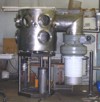
Water cooling and plant unit heating systems
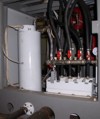
Product rotation mechanisms

Vacuum system
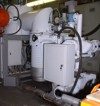
Gas supply system

Plasma sources
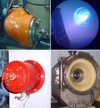
Powes sources.
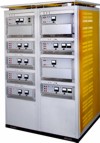
High-frequency substrate power source

Control systems

PLANT
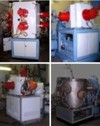
|
Specifications of units and systems.
Specifications of plant units and systems.
1. Vacuum chambers.
2. Water cooling and plant unit heating systems.
3. Product rotation mechanisms.
4. Vacuum system.
5. Gas supply system.
6. Plasma sources.
7. Powes sources.
8. High-frequency substrate power source.
9. Control systems.
- Vacuum chambers:
- types of vacuum chambers:
- cell type, with a side door;
- shaft type, with a lid on top – for large and heavy products that shall be loaded using lifting equipment;
- size of chambers from Ø600×600 mm (~200 l) to Ø1200×1400 mm (~1600 l);
- made of stainless low gasing steel;
- have water cooling system;
- have a heating system with hot water to prevent water vapor condensation and outgassing of the chamber walls during opening of the chamber and pumping out.
Read more.
- Water cooling and plant unit heating systems.
- types of systems:
- with open drainage – open “funnel”;
- closed drainage for loopback self-contained cooling systems with water circulation pumps;
- have stand-alone automated system for water heating for heating of chamber walls and other units;
- have alarm systems of water flow presence in individual channels and the emergency stop of respective devices.
Read more.
- Product rotation mechanisms.
Types of rotation mechanisms:
- planetary – simultaneous rotation of products around their own axes and around the axis of the chamber;
- double planetary – rotation around its own axis, around satellite axis and around the chamber axis;
- mechanism for rotation in two perpendicular or inclined planes.
Read more.
- Vacuum system:
- provides:
- residual vacuum at 10-5mm Hg;
- duration of pumping out from working chamber to maximum vacuum for no longer than 12-15 minutes;
- is based on the highly efficient diffusion pump and mechanical rotary vane and two-rotor pumps;
- for specific requirements to the vacuum it is produced on the basis of turbomolecular, adsorption, and other pumps.
Read more.
- Gas supply system:
- consists of:
- control unit on the basis of high-flow gas flow meters and pulse inlet valves;
- programmable electronic control unit.
- provides supply of a mixture of working gases into the chamber with control and automatic maintenance of:
- ratio of gases in the mixture;
- pressure in the chamber.
- displays the values:
- percentage of gases in the mixture;
- running costs of different gases;
- pressure in the chamber.
Read more.
- Plasma sources.
Plants are equipped with:
- Electric arc plasma sources with separation of flow SPS-1, providing:
- coating speed of up to 40 micron/h;
- surface etching speed up to 10 micron/h;
- direct flow ram electric arc plasma sources (evaporators);
- electric arc sources with two-step discharge for ion treatment of products;
- sources of metal ions with energies up to 100 keV (implanters) – for ion implantation.
Plants can also be equipped with sources of ions, plasma, and other devices developed by other companies– our partners.
Read more about plasma sources.
- Powes sources:
- are based on modern technical solutions with conversion of electric power at high frequency;
- have currents and voltage stabilization;
- have a microprocessor control system;
- have small dimensions and weight.
Read more.
- High-frequency substrate power source:
- has modes of operation:
- constant adjustable stabilized voltage of up to 1500V;
- pulse voltage pulse with adjustable amplitude, duration and frequency (10 kHz) of pulse repetition;
- has effective high-speed protection of products from damage by microarc discharges.
Read more.
- Control systems:
- fully automated based on industrial computers and controllers;
- with partial automation based on industrial controller for modernization of plants of old models, which systems and components do not allow to fully automate the process.
Read more.
|